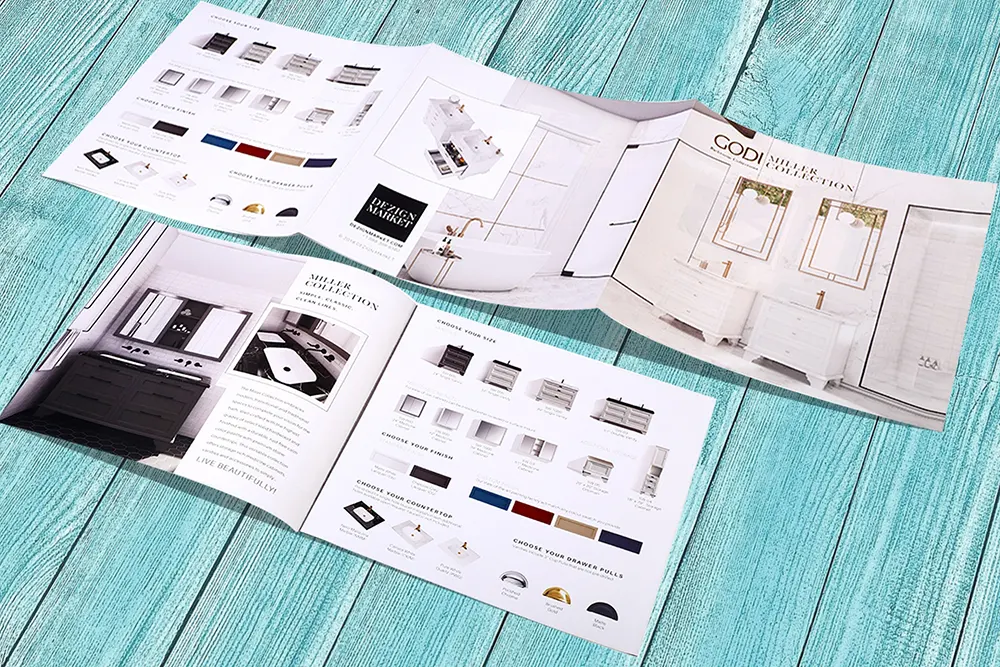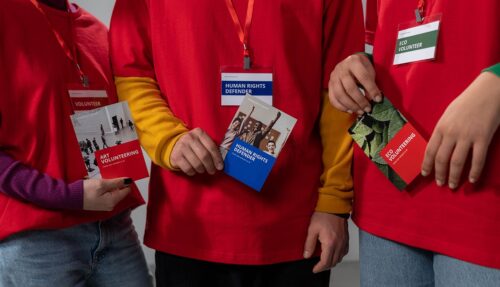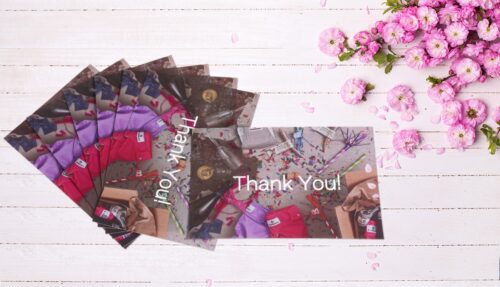Your complete guide to a successful flyer campaign

According to research reported in Forbes, digital marketing makes up 64.2% of the annual US advertising spend. That’s a big chunk and accounts for an estimated $183.1 billion of the total $285.2 billion spent on all forms of marketing. But that still leaves $102.1 that’s spent on traditional media, including TV, radio, newspapers, magazines, poster campaigns, and other print. And according to Statista, the slice of that pie that goes on print is $24.7 billion.
Exactly what percentage of that goes on flyers is hard to determine with precision, as the data isn’t collected. But we know from our own experience as printers that many businesses still use — and keep using — flyers for direct marketing and promotion. Repeat custom indicates that those campaigns are working, giving a good return on investment. So it’s clear that flyers are a valid and valuable aspect of modern marketing, especially when integrated into an overall marketing strategy, which includes digital and print combined.
So, how effective are flyers for marketing?
We’ve seen that flyers still work and that, despite the growth in digital marketing, traditional print marketing materials continue to make a significant contribution to marketing in the US. But are they cost effective? The answer is that they both can and should be, but that you need to get things right to make flyers work for you. To do that, you must think about two core aspects of any flyer campaign:
- design and printing
- distribution
In short, a flyer campaign will work for your business if it’s designed to communicate your marketing message, product promotions, and business offer to a targeted, clearly identified demographic; that it’s professionally printed; and that it’s effectively and efficiently distributed to the people in the target market segment.
We’d like to look at design and printing last, so let’s deal with market research and distribution channels first. That may seem the wrong way round, but it’s the smartest approach. Why? Because you’ll need to do your market research first to figure out what you want to say and to whom you want to say it. And your target audience will decide what kind of distribution you should choose to reach them. Those two factors combined will guide the design and printing choices you make for your flyers. But first, let’s take a quick run through the basics.
What is a flyer?
A flyer is a single printed sheet which is used to advertise a business, promote a campaign, build brand awareness, draw attention to a sale, or increase public awareness of your premise’s location and product offers. They may be distributed in four key ways:
- Delivery insert — when your flyers are inserted between the pages of newspapers and magazines delivered to individual homes
- Self-selection — when your flyers are displayed in a public place for interested prospects to pick up at will
- Handout — when your flyers are handed out directly in the street to people within a certain demographic group (young professionals, men or women, families, retired people, etc.)
- Direct mailing — when your flyers are mailed to named persons at their addresses. The names and addresses either come from your own lists of past customers or from lists held by a distribution agency, which can then be refined based on people’s age, interests, income, etc.
Flyers are usually distributed in large numbers, so a print order of 1,000 units is a typical minimum. More often, you’re probably looking at tens of thousands of flyers. But the more you get printed, the lower the cost-per-unit. For example, a short print run of just 500 flyers might cost you — depending on the paper stock, fold, inks, and finish — an average of 20 cents per unit. Whereas, ordering a batch of 10,000 would mean you’d pay closer to 3 or 4 cents per flyer. So, buying in bulk makes flyer marketing a very attractive prospect in terms of outlay. But is a larger print run worth it?
Do flyers still work?
The answer is — assuming you’ve done good marketing research, designed a flyer that will appeal to your target audience, and had it professionally printed — yes, it’s worth it. The numbers speak for themselves. The official statistics reported in Fundera show that the response to direct mailing — the most common and effective way of distributing flyers — is overwhelmingly positive. Here are the most salient statistics:
- 70% of consumers prefer to get printed marketing — like flyers — through the mail because it feels more personal than email or online advertising
- 62% of people who acted on the marketing they received through a mail drop went on to buy something from the company
- 39% of consumers tried a new product or service because they were introduced to the company via a direct mail campaign — either from a brochure, a sales letter, a leaflet, or a flyer
The same research cited above showed that people tend to read through flyers they receive — perhaps because they’re colorful, attractive, and short! — and often keep them for up to six weeks. The response rate is surprisingly high compared to other forms of outdoor print advertising — such as billboards and posters — and conversion rates, excellent.
The Direct Marketing Association have published a report which shows that up to 48% of consumers who had contact with a brand via their mailbox — including letters, a brochure, and flyers — went on to go to the store, subscribe for more information, checked out the website, or made an online purchase. So, flyers can drive traffic both to your physical premises if you have them and your online properties, too. With an almost 50% response rate, flyers represent one of the most powerful offline marketing tools available.
How to make a flyer that sells
So now we’ve looked at why market research is important as the first step in informing a positive flyer campaign. We’ve also examined the best available distribution options for flyers. And we’ve evaluated how effective they can be in driving new custom, subscriptions, and site visits both on- and offline. It’s time to think about design and printing.
What should a good flyer contain?
While the precise content of each flyer will be determined by the marketing aims and audience specific to a given campaign, several general principles apply across the board. When you’re designing your flyer, think about the following:
- Branding — making sure your flyer is consistent with your overall brand in terms of color, logo, slogans, style, etc
- A unique message — your flyer should have a single, unique message and communicate it as powerfully and succinctly as possible
- Include all the essential details — this may seem obvious, but you’d be surprised how many businesses forget to add all the important details such as prices, dates, store locations, websites and social media addresses, discount codes, telephone numbers, and an email address
- Targeted content — make sure that your flyer’s content, including images and text, is appropriate to the target audience so that it will build a sense of familiarity and trust
- Make it easy on the eye — a flyer isn’t a product catalog, a brochure, or an annual report! It’s a short marketing message designed to get the reader to take a single action (subscribe, inquire, buy, visit). So, don’t try to cram too much information onto the page. Keep it short, sweet, and unambiguous with plenty of white space and a clear font
- A clear call-to-action — as we’ve said, you want the reader to take an action and the best way to do that is to tell them exactly what to do! This is called a CTA or call-to-action. It can be as simple as, “Call us now for a no-obligation quote”, or, “Use the discount code for 20% off in-store”, or, “Visit the website now to see the full range.”
- Discounts and special offers — the research from the DMA also suggests that including a promo code, discount, or other special offer on a flyer increases response rates by 33%
- Tracking and data gathering — include a QR code, campaign identification number, or traceable discount code on your flyer to turn it into a great source of consumer data you can use to evaluate the success of your current campaign and inform or refine future iterations
Printing a successful flyer
It’s worth talking to your custom printing service early in the design process. Good printers will be happy to provide your designer with templates, material — types of paper, ink, and finishes, for example — and printing options at the outset. An integrated approach to design and printing guarantees the best results. Talk to your printer about choices such as:
- Formats and sizes — A7, A6, A5, postcards, tower, square, custom
- Fold options — flat page, gate fold, accordion fold, z-fold, roll fold, etc.
- Paper stock — material, weight, color, etc.
- Finish — coated or non-coated, matte, gloss, silk, etc.
- Inks — black and white, color, dye, pigment, eco-friendly
Once you’ve finalized your design and the technical details, your printer can advise you about formatting and preparing the files for printing and whether to use digital or offset technology to produce the final result. You will get a proof copy of your flyer to check and correct before committing to the final print run.
Get in touch today for an informal chat or to request a quote. Our enthusiastic team love sharing their experience and expertise to help you create the most beautiful, effective flyers possible and give your marketing campaign the best chance of success. With decades of experience under our belt, a reputation for friendliness, professionalism, and printed products of the highest quality; be smart and talk to us first.










